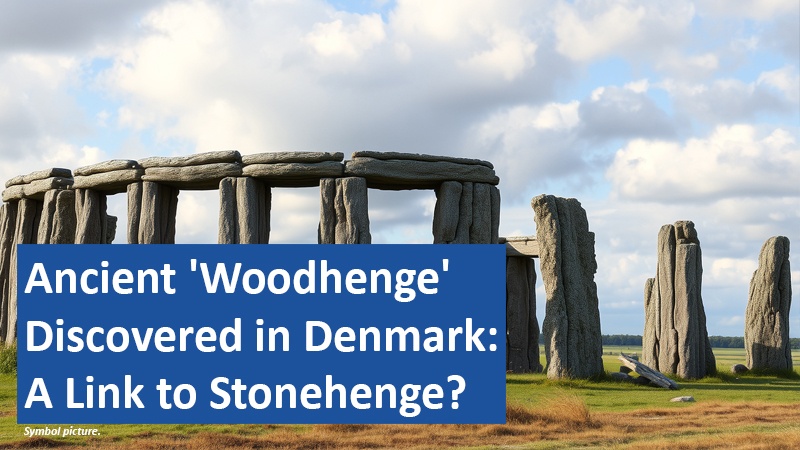
Archaeologists have unearthed a 4,000-year-old wooden circular structure in Denmark that bears a striking resemblance to the iconic Stonehenge in England. This discovery sheds new light on the connections between Neolithic cultures across Europe and offers valuable insights into ancient rituals and social structures.
######################################################
Now exclusively try Amazon Prime and Prime Video free for 30 days!
##########################################################
A Timber Circle Emerges
Construction workers in Aars, northwestern Denmark, stumbled upon an extraordinary find while preparing for a new housing development. The Vesthimmerlands Museum reports that researchers have uncovered a prehistoric structure similar to Stonehenge. This “Timber Circle” consists of 45 wooden posts arranged in a circle with a diameter of about 30 meters (98 feet), with posts spaced approximately 2 meters (6.5 feet) apart.
Ancient Connections Revealed
Curator Sidsel Wåhlin explains that the site dates back to the Neolithic period, approximately 4,000 years ago. This discovery suggests that the Himmerland people, the region’s early inhabitants, had contact with other European cultures thousands of years ago. “It’s an exceptional find,” Wåhlin states. “The Timber Circle provides valuable insights into the rituals and social structures from the late Stone Age and earliest Bronze Age. It’s a testament to Denmark’s rich archaeological heritage and the Himmerland people’s close connections to other regions and peoples of Europe”.
Ritual Significance
The Timber Circle is located in a ceremonial setting, near a burial ground with Neolithic burial mounds and several Stone Age settlements. Researchers believe this indicates the structure held great importance in the ancient culture and was part of a complex ritual and social environment.
Links to Stonehenge and Beyond
Experts have found similar wooden circles in Britain, Ireland, and other parts of Europe, often associated with sun worship and agricultural rituals. The Danish “woodhenge” appears to align with Stonehenge and nearby Woodhenge, suggesting shared religious or cultural beliefs across Neolithic communities in Europe.
Future Excavations
Archaeologist Andreas Bo Nielsen explains that formal excavation work on the Timber Circle will begin soon. This could lead to further discoveries about the monument’s purpose and use. “The excavation is a meticulous process, and we’re very excited about this find,” Nielsen says. “We can’t wait to begin the actual uncovering of the structure. The Timber Circle is a window into the past, allowing us to better understand the ceremonial and ritual activities of our ancestors”.
This remarkable discovery not only enriches our understanding of Denmark’s prehistoric past but also highlights the interconnectedness of ancient European cultures.
How might this finding change our perception of Neolithic societies and their shared beliefs? Share your thoughts in the comments.
Based on content from www.forschung-und-wissen.de and own research.